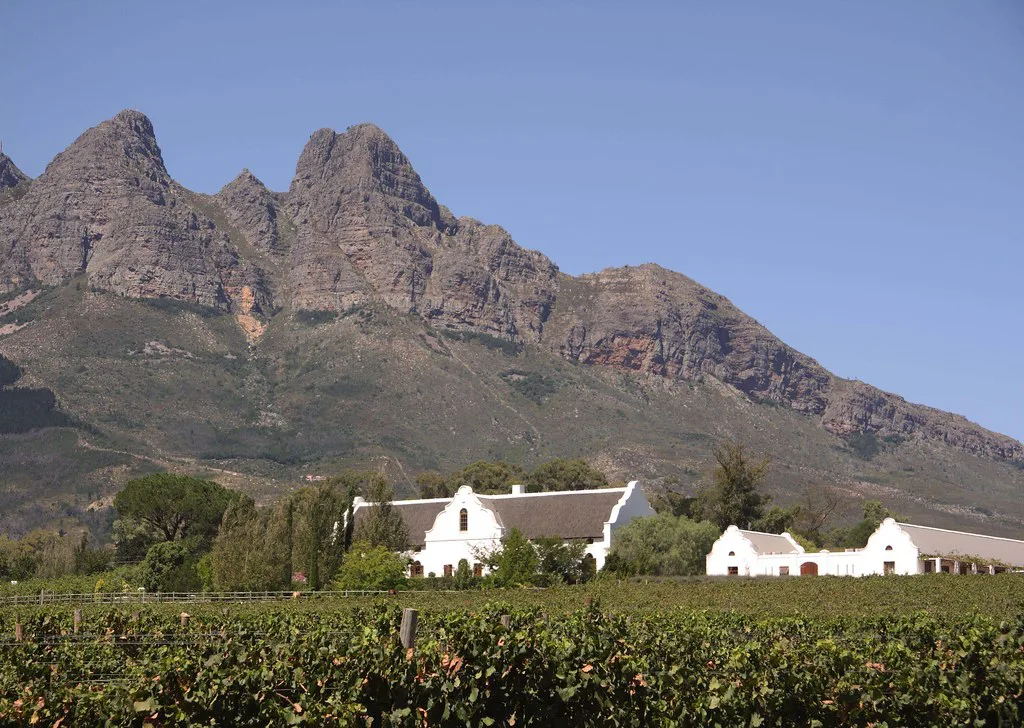South Africa was never top of my list of wine regions: over exposure to cheap, average white wines in my early drinking days and several experiences with poorly made Pinotage that tasted vaguely like old, rubber tyres cemented my feelings on the region for a while.
A chance encounter with a Hamilton Russell Chardonnay made me sit up and pay a little more attention. White burgundy has always been a weakness of mine so I can’t help trying Chardonnay from other parts of the world to see how they match up. It wasn’t quite perfect but it was interesting in a way other South African white wines hadn’t been to me before. Hamilton Russell are now a well-known South African wine producer but it has taken a long time to get to the stage where quality driven producers from this region are in the mainstream.
South Africa’s wine making history dates back to the 17th century but its wine industry has suffered interruptions thanks to a turbulent political backdrop that never allowed it to truly flourish. Several wine makers, producers and savvy business folk saw the potential in the region back in the 1970’s and began to invest, experiment and produce a variety of wines. Success came slowly but surely and, with the end of Apartheid and the opening up of commercial markets, the wine industry boomed. Exports of easy drinking, inexpensive, dry white wines grew rapidly and more and more areas were planted to vine. Alongside the mass produced white wines made predominantly from Chenin Blanc, small estates continued to experiment with different grape varieties to see what would work best. Chardonnay was one such grape variety but it took time to find the right stock that would grow favourably in the area and blends were common as a result. Hamilton Russell were one of the first to offer a pure South African Chardonnay but they were also sensible to set the vineyard up in the 1970’s at the most southerly point allowing the cooler conditions to work in their favour. Many have since followed suit.
Several changes to production restrictions over the years allowed estates to produce wines from grapes bought in as well as single vineyards outside their own domain creating a scramble to find the best patches of land on which to grow vines. A shift in focus to red grape varieties occurred and the selection now grown here is extensive. Pinotage is the Cape’s signature grape variety but it varies dramatically in quality. Its rusticity is hard to hide and well-thought through growing and production techniques are needed to get the best out of it. Many producers turned to classic French grape varieties in the hope of producing more elegant and rounded red wines and again, trial and error has seen certain varieties and blends thrive. Cabernet Sauvignon, Merlot, Syrah, and in the coolest areas Pinot Noir have seen great success.
All of this history, particularly from the last 30 years, has contributed to South African wines finally, after years of experimentation, approaching a place of harmony. There is still plenty to discover but they have found what works and what doesn’t and are now in the stage of perfecting their craft rather than searching for it. Nothing reflects this better than a wine receiving the first perfect 100 point score from a top critic. 2015 Kanonkop Paul Sauer, a Bordeaux blend from a fantastic year, achieved this accolade with a wine that offered perfect balance – the holy grail of winemaking.
2015 Kanonkop Paul Sauer £290 per bottle
The aforementioned perfect scoring Bordeaux blend of Cabernet Sauvignon, Cabernet Franc and Merlot. Still young and in need of time but elegant, with pure clean fruit and a superb range of classic Bordeaux characteristics waiting in the wings.
2016 Kanonkop Paul Sauer £75 per bottle
Not as highly rated as the 2015 which is likely down to the balance not being quite perfect but then, how can you follow such a great vintage?
Lighter in weight than previous years with the fruit sitting a little higher in tone but good freshness on the nose.
2015 Vergelegen V Red £105 per bottle
Vergelegen are an old-established estate but wine production didn’t get going until the early 1990’s. The V red is 100% Cabernet Sauvignon some years and blended with small amounts of Merlot, Petit Verdot and Cabernet Franc in others. Well-made and always well regarded but perhaps never thrilling.
2012 Raats MR Mvemve Raats de Compostella £88 per bottle
One of the more interesting blends being made in South Africa from a very competent producer. The 2012 vintage is made up of 28% Cabernet Franc, 23% Cabernet Sauvignon, 21% Malbec, 18% Petit Verdot and 10% Merlot. The end result when reading that combination has to be tasted rather than guessed at. Age is key though and with 9 years behind it now is about perfect.
2019 Hamilton Russell Vineyards Ashbourne Pinotage £57 per bottle
If you want to try the famous South African Pinotage grape, Hamilton Russell’s Ashbourne estate has been attempting to soften this rather austere grape variety. They have begun to blend the Pinotage with a small percentage of Cinsault grown in a different terroir and have avoided the use of oak. The style is edging towards Beaujolais and is far more floral and open than a classic Pinotage. It won’t be to everyone’s taste but it is an interesting effort in creating something different from Pinotage.

